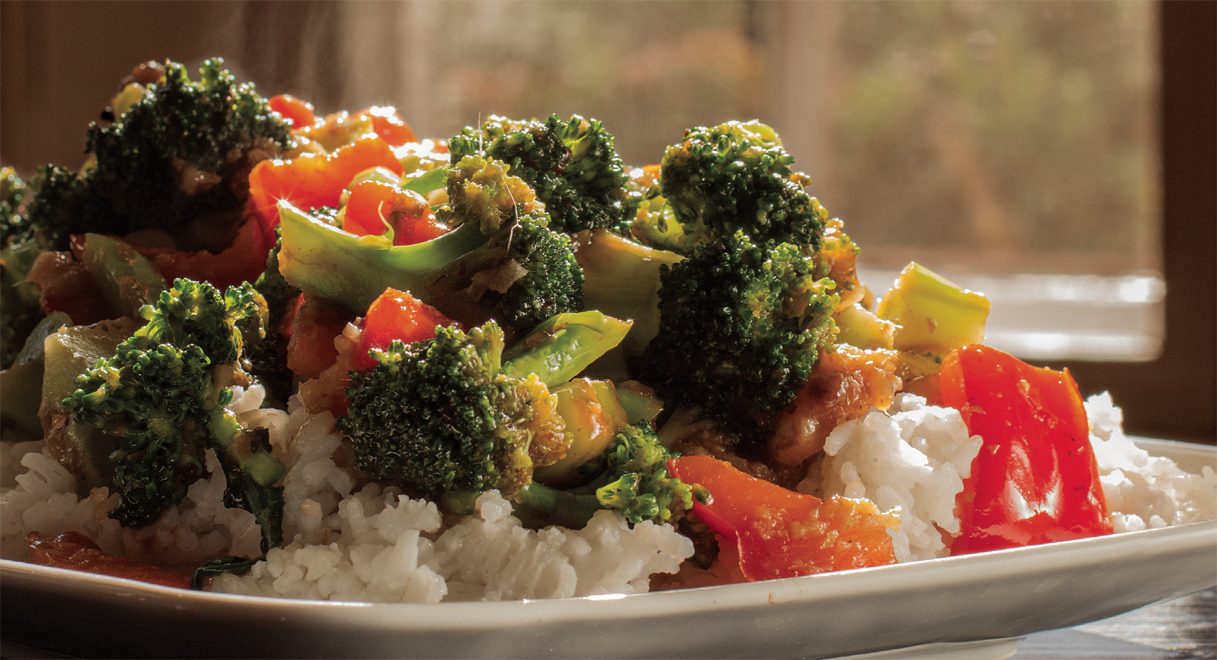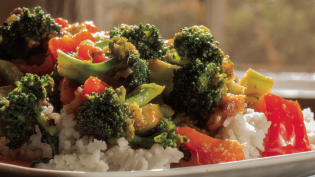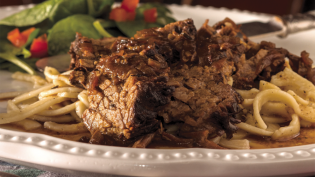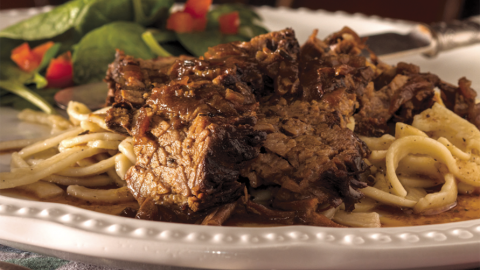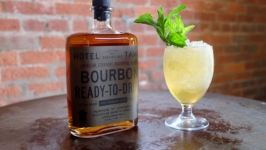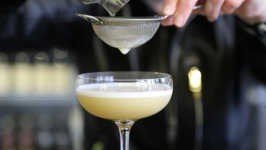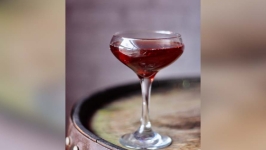Cooking Fresh: A Shot in the Pot
For the tentative American cook, using liquor in a recipe has an air of exotica (boeuf bourguignon) or drama (cherries jubilee). I spent my early cooking years running to the liquor store for Madeira or rice wine or Calvados to fulfill exactly what a recipe required to add flavor or deglaze a pan.
So it was somewhat of an epiphany when I heard Chinese cooking authority and cookbook author Nina Simonds remark offhandedly many years ago that she substituted Scotch when a Chinese recipe called for rice wine.
From that day forward, bourbon has been on my kitchen shelf next to the fish sauce, black vinegar and soy sauce. A tablespoon or two of bourbon has replaced rice wine in the cornstarch-thickened sauce mixtures for Chinese and many other Asian dishes. In my kitchen, bourbon replaces brandy or Cognac or rum in recipes for meats or sweets.
From 30,000 feet, you can see that cooks have, for centuries, been grabbing the bottle nearest them—from sherry in Portugal to beer in Belgium—and using their native libation to add flavor to whatever they were cooking.
And that’s why I didn’t bat an eye when perusing a 2009 recipe that Louisville chef Edward Lee shared with Gourmet magazine, in which lamb shanks were simmered to tender in highly seasoned liquid base of chicken broth and a generous cup of bourbon. Stealing that liquid base idea from Lee, I pared the ingredients in his recipe down to accommodate my own kitchen. But even with a few basic aromatics and herbs, the recipe still yields a dark, flavorful stew. When used to cook Kentucky-raised chuck roast from a nearby farmers’ market with home-simmered chicken stock and thyme from my garden, it has all the terroir of a coq au vin.


